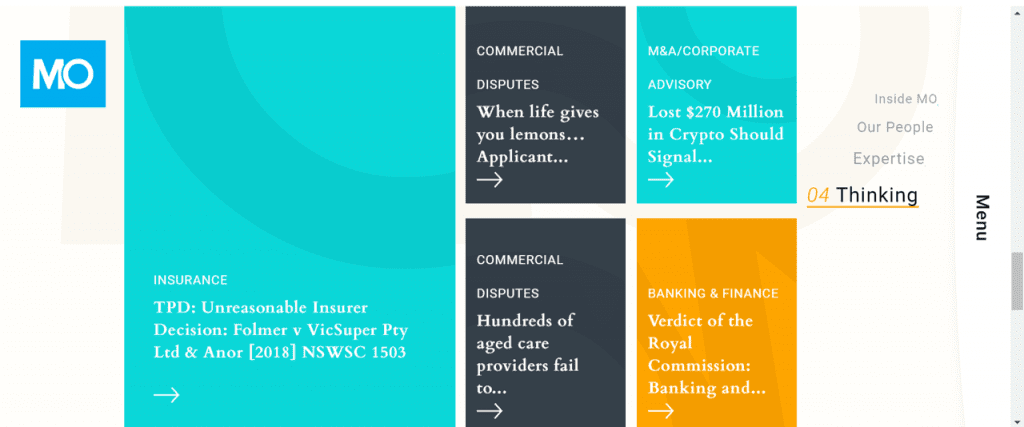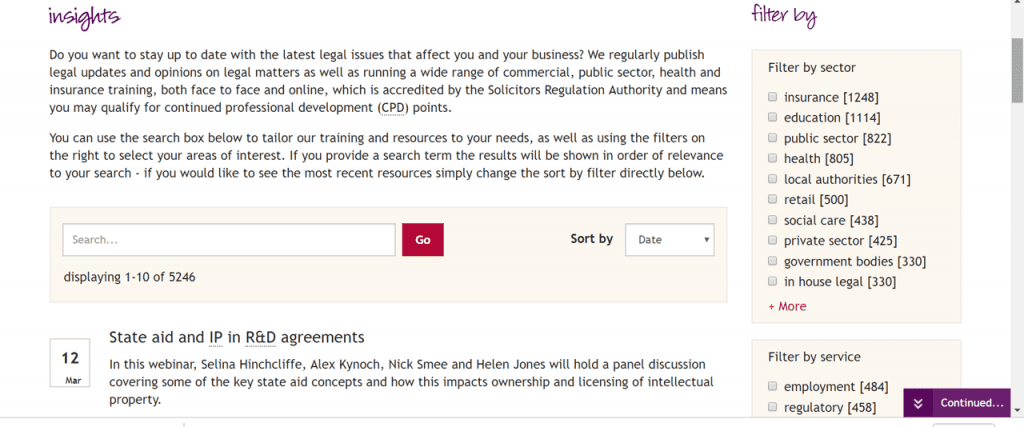Your professional services firm’s website is its most valuable ‘owned’ digital asset. It’s the epicenter of your firm’s marketing efforts.
It’s where clients turn for knowledge and insights.
It’s where prospects turn to educate themselves about your brand and business, to pre-qualify you, and validate that you are, indeed, what you claim elsewhere to be.
It’s where journalists and analysts turn when they need to identify and connect with a subject matter expert or thought leader.
And it’s where candidates turn when they’re scoping prospective employers and opportunities.
These days, most firms refresh their website every three to five years. And while it’s encouraging to see firms becoming more adventurous and creative about how they present themselves, many are missing the mark.
Firms are creating websites which are visually attractive, yet structurally and functionally flawed.
Form follows function
Professional services firms sell expertise – an intangible product, if you like.
One of the most effective ways a professional services firm can market its expertise is through content – articles, reports, case studies, videos, podcasts and so on. This content demonstrates, and ideally provides evidence of, a firm’s experience and expertise.
On a firm’s website, this content must be searchable, digestible, actionable and shareable. Otherwise, what’s the point?
As explained by Dave Brown of ContentDevelopmentPros: “One of the biggest barriers to visitor retention is poor navigation. If first-time readers have to spend more than a few seconds to find the content they need, they’re far more likely to opt for a more intuitive alternative.”
Many services firms are creating websites which are visually attractive, yet structurally and functionally flawed.
Jacqueline (Jaci) Burns, Market Expertise
Form must follow function.
Unless you first create the right structure and allow for the desired functionality (I’m talking about the functionality your target audience desires, not what excites you or your developer), your website will be little more than the digital equivalent of a dumb blonde.
Run of the mill
Mills Oakley is an Australian law firm which launched a new website in 2018. Aesthetically, the site kicks goals – it’s visually surprising, the design is contemporary, the fonts and palette are fresh, the corporate photography is engaging.
The first impression is positive.
But look closer and it doesn’t take long to see that this is an example of form over function. It’s as though the firm (or its digital agency) doesn’t understand or has disregarded the wants, needs and online behaviour of its target audience – especially its business and government clients and prospects.
Critically, the firm’s content – remember, I’m referring to the articles, case studies and so on that demonstrate, and provide evidence of, MO’s experience and expertise:
- Is awkwardly presented – article headlines are cut off mid-way, summaries are absent

- Cannot be filtered by service, sector, author or date
- Is difficult to find because there is no keyword search
- Is not relationally linked (because you read this, you might also be interested in this) so there’s little reason to linger
- Does not contain social shares so the firm is missing out on valuable ‘earned’ media
- Does not easily allow a website visitor to engage or connect with an author or subject matter expert.

In contrast, UK law firm Browne Jacobson’s website provides vastly more utility. From that firm’s Insights page content can be:
- Filtered by sector or service
- Found by a keyword search
- Sorted by date
- Understood as headlines are displayed in full and accompanied by a couple of lines of explanatory or introductory text

From individual content pages, visitors can:
- Immediately locate author or subject matter expert contact details
- Share the content across popular social media channels
- Find related content
and so on.

Not same, same – B2B is different
It seems like many professional services firms, perhaps including Mills Oakley, are making poor digital agency appointments.
Business-to-business marketing is substantially different to consumer marketing: the sales cycle is longer; the buyers are more informed; there are multiple buyers and influencers involved in the decision-making, the contracts are lucrative, the engagements are multi-year, the barriers to switching can be high…
If your professional services firm employs, or routinely engages, experienced B2B marketing stewards and strategists, then it will be equipped to manage and direct suppliers that have alternative backgrounds and credentials.
But if yours is a mid-tier firm that perhaps doesn’t know what it doesn’t know, then B2B and professional services experience should be non-negotiable when sourcing external partners.
If you like what we have to say, and how we say it, connect with Market Expertise on LinkedIn and on Twitter.





